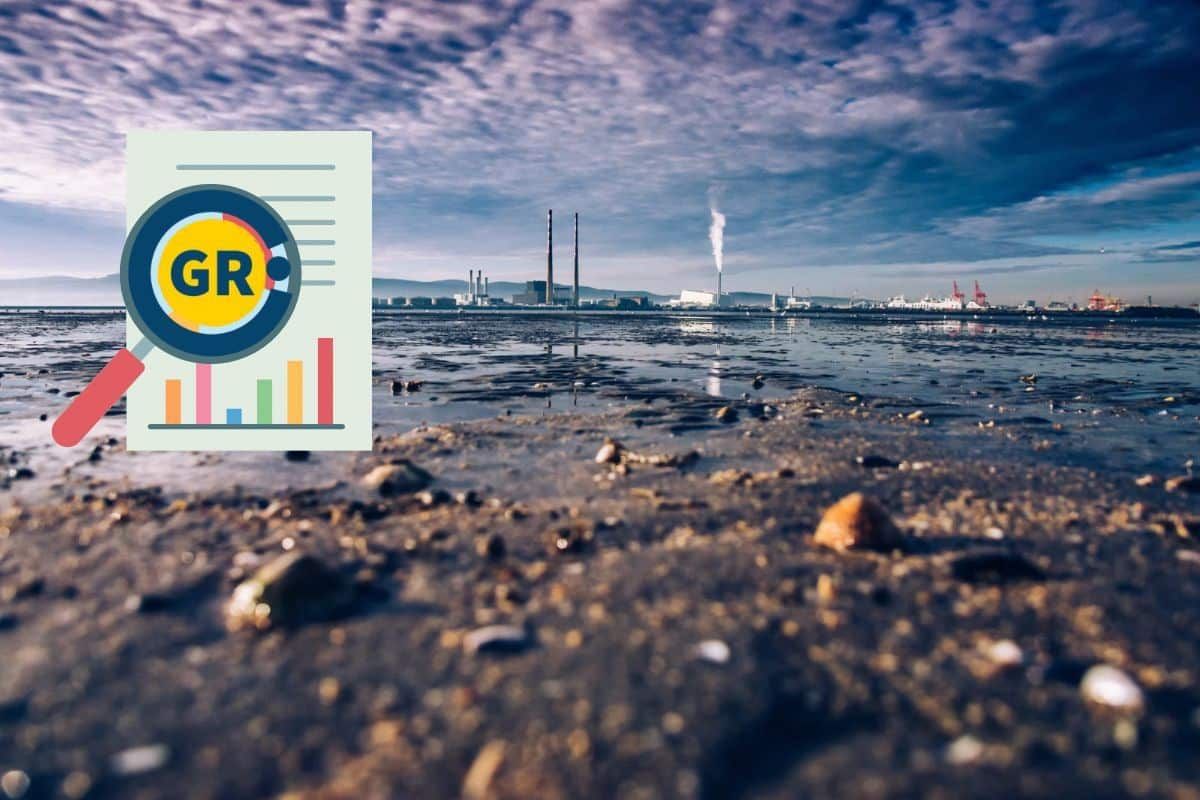The 10 most polluted countries in the world are based on air quality index (AQI) rankings and include Chad, Iraq, Pakistan, Bahrain, Bangladesh, Burkina Faso, Kuwait, India, Egypt, and Tajikistan.
These countries face severe air pollution due to the high population density, industrial emissions, and agricultural waste. The poor air quality has led to respiratory problems, heart diseases, and other health issues for the population.
Kuwait, the United Arab Emirates, Bahrain, and Egypt face significant air pollution due to industrial emissions and vehicular exhaust.
Poor waste management practices and untreated sewage are also significant sources of pollution in many of these countries, leading to water pollution and the spread of waterborne diseases.
To address the pollution crisis, governments of these countries must take significant measures, such as implementing environmental regulations, promoting the use of clean energy sources, improving waste management practices, and increasing public awareness about the health impacts of pollution.
There are six Indian cities in the top 10 for the most air pollution, 14 in the top 20, 39 in the top 50 and 65 in the top 100.
10 most polluted countries in the world
| Rank | 10 most polluted countries in the world |
| 1 | Chad |
| 2 | Iraq |
| 3 | Pakistan |
| 4 | Bahrain |
| 5 | Bangladesh |
| 6 | Burkina Faso |
| 7 | Kuwait |
| 8 | India |
| 9 | Egypt |
| 10 | Tajikistan |
Top 10 most polluted countries in world
Chad
Chad is a landlocked country in central Africa. It is bordered by Libya to the north, Sudan to the east, the Central African Republic to the south, Cameroon and Nigeria to the southwest, and Niger to the west
Chad, like many African countries, faces significant environmental challenges, including pollution. The country’s main sources of pollution include deforestation, desertification, and the pollution of water resources.
Deforestation is a major issue in Chad, with large areas of forest being cleared for agriculture and fuelwood. This has led to soil erosion, decreased biodiversity, and increased greenhouse gas emissions.
Iraq
Iraq is a country located in Western Asia. It is bordered by Turkey to the north, Iran to the east, Kuwait to the southeast, Saudi Arabia to the south, Jordan to the southwest, and Syria to the west.
Iraq is facing significant environmental challenges, including pollution, due to decades of war, conflict, and economic sanctions. The country’s main sources of pollution include air pollution, water pollution, and soil contamination.
Air pollution is a major concern in Iraq, particularly in urban areas such as Baghdad and Basra. The country’s main sources of air pollution include emissions from vehicles and industrial activities, as well as dust storms that sweep across the region.
Pakistan
Pakistan is facing a significant pollution crisis that affects its air, water, and land. The major sources of pollution in Pakistan include industrial emissions, vehicular exhaust, agricultural waste, and poor waste management practices.
Air pollution is a severe problem in many of Pakistan’s urban areas, especially in cities like Lahore, Karachi, and Islamabad. The main sources of air pollution are vehicular emissions, industrial emissions, and burning of fossil fuels. As a result, the air quality in these cities often falls below acceptable levels, which can have serious health consequences for the population.
Bahrain
Bahrain is a small island nation in the Arabian Gulf that is facing several environmental challenges, including pollution. The major sources of pollution in Bahrain include industrial emissions, vehicular exhaust, and waste management practices.
Air pollution is a significant problem in Bahrain, particularly in urban areas such as the capital city of Manama.
The main sources of air pollution are vehicular emissions, industrial emissions, and dust storms that occur due to the country’s dry and arid climate. Poor air quality can lead to respiratory problems and other health issues for the population.
Water pollution is also a significant issue in Bahrain, mainly due to the discharge of untreated sewage and industrial waste into the Arabian Gulf.
This pollution can have a severe impact on the quality of water available for drinking, fishing, and other uses, which can affect both human health and the environment.
Bangladesh
Bangladesh is a densely populated country in South Asia that is facing several environmental challenges, including pollution. The major sources of pollution in Bangladesh include industrial emissions, vehicular exhaust, agricultural waste, and poor waste management practices.
Air pollution is a significant problem in Bangladesh, particularly in urban areas such as Dhaka and Chittagong. The main sources of air pollution are vehicular emissions, industrial emissions, and burning of fossil fuels. The poor air quality can lead to respiratory problems and other health issues for the population.
Water pollution is also a severe issue in Bangladesh. The main sources of water pollution include untreated sewage, industrial waste, and agricultural runoff. This pollution has a significant impact on the quality of water available for drinking, irrigation, and other uses, leading to various health problems, including waterborne diseases.
Burkina Faso
Burkina Faso is a landlocked country in West Africa that is facing several environmental challenges, including pollution. The major sources of pollution in Burkina Faso include agricultural waste, mining activities, and poor waste management practices.
Air pollution is not a significant problem in Burkina Faso, although dust from the country’s arid climate can be a concern in some areas. Water pollution, on the other hand, is a severe issue in Burkina Faso.
The main sources of water pollution include industrial waste, agricultural runoff, and mining activities. This pollution has a significant impact on the quality of water available for drinking, irrigation, and other uses, leading to various health problems, including waterborne diseases.
Kuwait
Kuwait is a small oil-rich country in the Arabian Gulf that is facing several environmental challenges, including pollution. The major sources of pollution in Kuwait include industrial emissions, vehicular exhaust, and waste management practices.
Air pollution is a significant problem in Kuwait, particularly in urban areas such as the capital city of Kuwait City.
The main sources of air pollution are vehicular emissions, industrial emissions, and dust storms that occur due to the country’s dry and arid climate. Poor air quality can lead to respiratory problems and other health issues for the population.
India
India is a highly populated country in South Asia that is facing several environmental challenges, including pollution. The major sources of pollution in India include industrial emissions, vehicular exhaust, agricultural waste, and poor waste management practices.
Air pollution is a significant problem in India, particularly in urban areas such as Delhi, Mumbai, and Kolkata.
The main sources of air pollution are vehicular emissions, industrial emissions, and the burning of fossil fuels. Poor air quality can lead to respiratory problems and other health issues for the population.
Egypt
Egypt is a country in North Africa that is facing several environmental challenges, including pollution. The major sources of pollution in Egypt include industrial emissions, vehicular exhaust, and agricultural waste.
Air pollution is a significant problem in Egypt, particularly in urban areas such as Cairo and Alexandria.
The main sources of air pollution are vehicular emissions, industrial emissions, and burning of fossil fuels. Poor air quality can lead to respiratory problems and other health issues for the population.
Tajikistan
Tajikistan is a mountainous country in Central Asia that is facing several environmental challenges, including pollution. The major sources of pollution in Tajikistan include industrial emissions, vehicular exhaust, and poor waste management practices.
Air pollution is a significant problem in Tajikistan, particularly in urban areas such as the capital city of Dushanbe. The main sources of air pollution are vehicular emissions, industrial emissions, and burning of fossil fuels. Poor air quality can lead to respiratory problems and other health issues for the population.
Keep Reading
List of states where forest cover increased in last 4 years
‘Increasing forest cover of India’ is a misleading claim
136,621 environment-related crimes registered in 2021: CSE report
Northeast India more prone to drought than Rajasthan: CSE report
India 4th worst hit country by natural disasters: CSE Report
Support us to keep independent environmental journalism alive in India.
Follow Ground Report on X, Instagram and Facebook for environmental and underreported stories from the margins. Give us feedback on our email id greport2018@gmail.com.
Don’t forget to Subscribe to our weekly newsletter, Join our community on WhatsApp, and Follow our YouTube Channel for video stories.









